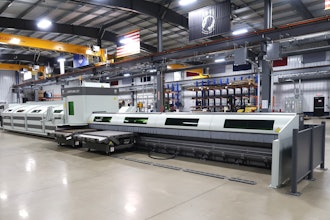Traditional valves such as butterfly, slide, gate and iris, have been a point of problems associated with discharging powder hygienically and without hindering flow. Essentially all of these devices are placed at the bottom of a Rigid Intermediate Bulk Container (RIBC), bin, hopper or silo and have some or all of their working components immersed in the discharging powder.
Powder with inherent difficult characteristics will not flow through such valves and will often bridge, rathole or flush. Bridging occurs when the powder compacts itself over the valve and will not flow. Ratholing produces a small inner core of powder that will readily flow, leaving an immovable larger outer core of powder resistant to being discharged. The opposite of these actions is a total "flushing" of powder characterized by an uncontrollable discharging.
Discharge Aids
To overcome bridging and ratholing, it is common to see vibrators or air cannons fixed to the wall of a bin. You will also likely see an operator beating the side of a bin with a sledgehammer. Though these methods can aid product flow, they often exacerbate the problem by creating compaction, consolidation, or flushing. Discharge aids also create noise pollution and can cause expensive damage to the hopper.
Another common tool to combat these flow problems is the bin activator, an inverted cone that is fixed to an assembly and flexibly supported to the bin outlet. The bin activator is then externally vibrated to promote positive discharge. Disadvantages to the bin activator are that there is no valving to stop product flow and no metering capability to control the flow.
A proper designed system with a bin activator should also include a positive shut off valve as well as a metering device or feeder. This system requires more headroom, more maintenance, and more cost.
Cone Valve Technology
In the early 80s, cone valve technology hit the market, combining the flow promotion of a bin discharger with the controlling characteristics of a traditional valve. One of the leaders in the industry, Material Control Engineering, now Matcon, designed a concept of metering, discharging and valving into what is now the Matcon Cone Valve. Ivan Semenenko, founder and inventor of the cone valve was key in bringing the technology to the forefront of powder handling.
The device consists of an air-actuated inner cone that acts as bridge breaking device when lifted and as a valve when the cone is lowered and seated next to the RIBC body. Some amount of flow control can be achieved by controlling the frequency of the cone.
In the 80's, the design spawned numerous competitors and various copycat equipment that fed off the initial interest.
Although the cone valve design is a happy median between bin dischargers and traditional valves, there are some inherent problems with the early equipment. Ideally, a valve should maintain its simplicity with a minimal number of parts that could wear and be isolated away from the powder flow.
The initial designs, Matcon and others, were constructed of almost a hundred parts that were mostly in contact with the powder flow, potentially causing product contamination and cross contamination.
Due to the many parts immersed in the powder flow, there is a larger chance of equipment wear and possible downtime. Even general maintenance with the early complex designs was extremely involved, requiring extended downtime.
Another major problem with these cone valves involves the tipping of the valve in-transit, causing powder to leak. The cone was prone to slight movement, which would break the seal between the valve and the RIBC spout.
New Technology
After 18 years with Matcon, Ivan Semenenko started a new company to research the intrinsic problems of earlier cone valves. Semenenko's company ISL Cone-Valve spent two years developing a new design that directly challenged each of the past problems with cone valves.
The result is a new design that includes a cone valve and transfer hopper. The valve is placed in the RIBC or bin and seals with a hygienic gasket at the RIBC or bin spout. At the same time, a transfer hopper consisting of an inflation device and probe is part of the discharge station below.
Once an RIBC is lowered, the inflation device lifts the probe vertically to raise the cone valve. The powder is free to flow through the transfer hopper tube without coming into contact with any valve parts that could possibly contaminate.
By simplifying the design, Semenenko reduced the maintenance required and reduced the total number of parts to only six! One maintenance worker can totally dismantle and clean the valve unit in minutes compared to hours with older cone valve technology.
Key features of this new cone valve technology include no mechanisms in the powder flow, no leakage due to tilting, no degradation of fragile powder and variable flow metering.
The new cone valve technology addresses the always constant problem of failsafe valving with a unique feature. Most powder valves, whether butterfly, rotary, iris or others, have the inherent difficulty of close the valve against the large force of powder flow. If air or power supply is lost while the valve is open the powder will continue to flow.
Cone valves meet this demand by using gravity. When de-energized the valve closes with the powder flow and not against it. Older cone valves faced a problem of trickle leaking around the outer base where the cone meets the seal.
New designs of the cone valve employ an idea of lowering the cone valve to approximately 15 mm from fully closed, thus allowing an upper seal to close while any residual powder is emptied below. They valve is then fully closed, without any probability of leakage.
The valve uses a simple external sensor and control logic to vary the lift height of the cone and can be set, reset and/or continuously adjusted for accurate batch and rate capabilities. The cone can be statically adjusted to a certain height or can be pulsed to act as a discharge aid for difficult, cohesive powder.
Where Can They Be Used?
Cone valves have predominantly been used in RIBC Systems for the pharmaceutical, food, and chemical industries. In addition to using them on process hoppers and silos, ISL cone valve technology has recently been used in Flexible Intermediate Bulk Containers (FIBCs), known as Bulk Bags. By working with a variety of Bulk Bag manufacturers, ISL is offering cone valve technology to a larger market of powder handling industries.
New facilities or current old cone valve users can reap the benefits of this new technology. Cone Valve upgrade units are available that require very little retrofitting and work as well as new installations.
Due to the simple, hygienic, and proven design of cone valves, the equipment is ideal food and pharmaceutical manufacturers. Other industries where cone valves have been used include chemical and plastics.
Conclusion
The idea of worry-free valving and reduced maintenance costs may have not been a reality with traditional valve technology. With new cone valve technology that meets the needs of low maintenance, total containment, metering and failsafe valving, users can rest easy that their production will continue without problems.






















